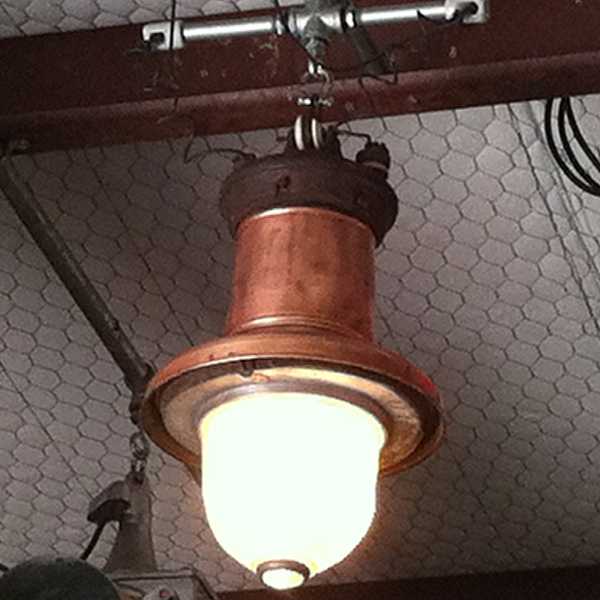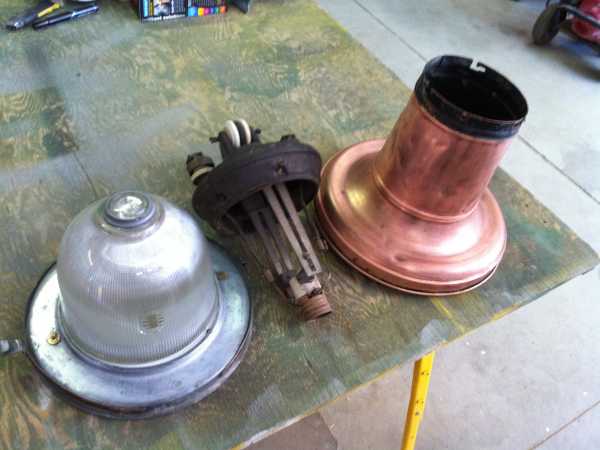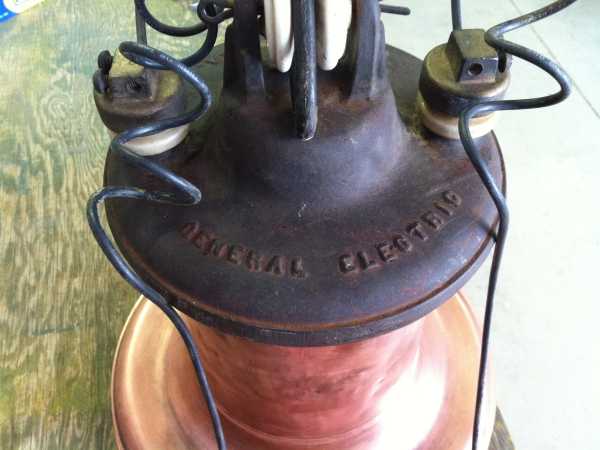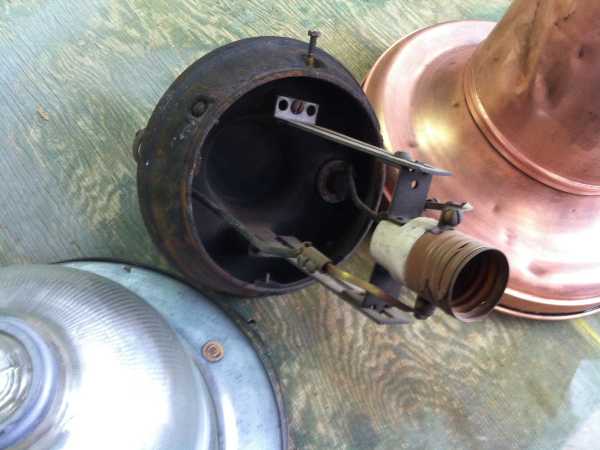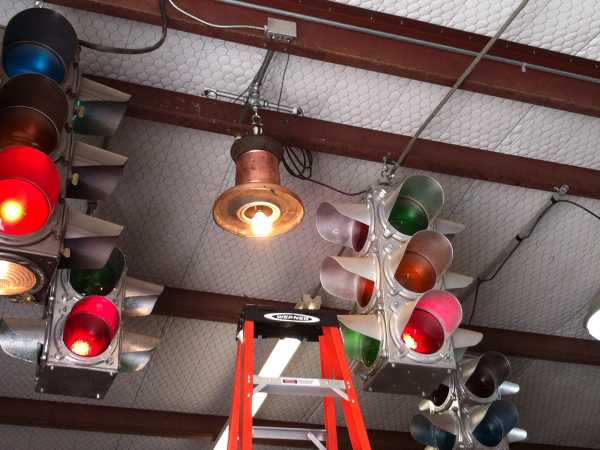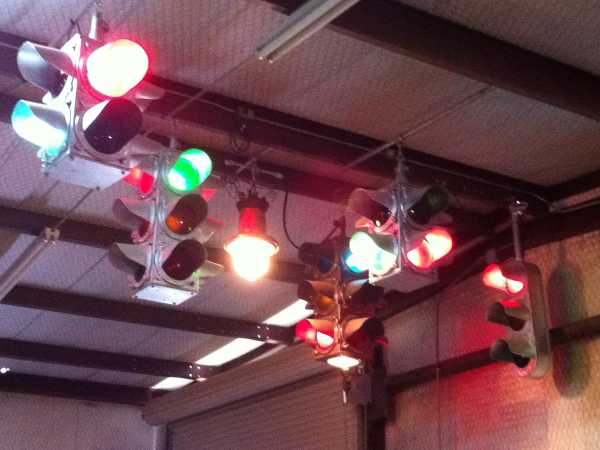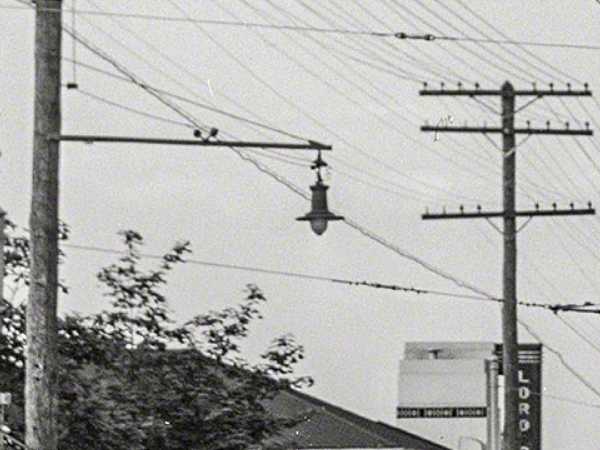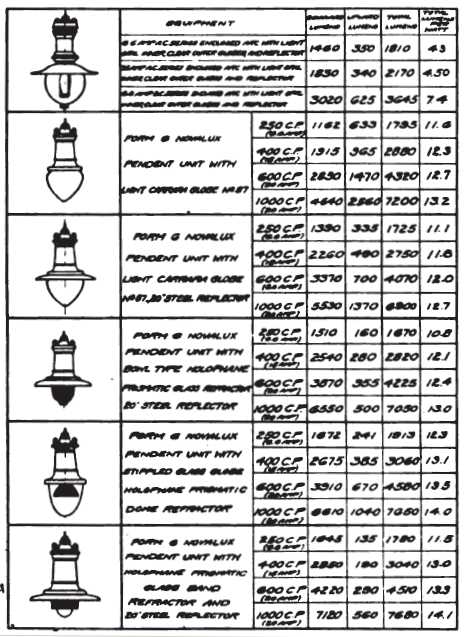 GE's Novalux Form 6 was one of GE's first high output pendant type incandescent luminaires that used glass refractors for light diffusion. GE offered five refractor options in the late teens through the 1920s that appeared in their product reviews. (The luminaire at the top of the chart is a luminous arc lamp. The remaining five are incandescent lamps.)
GE's Novalux Form 6 was one of GE's first high output pendant type incandescent luminaires that used glass refractors for light diffusion. GE offered five refractor options in the late teens through the 1920s that appeared in their product reviews. (The luminaire at the top of the chart is a luminous arc lamp. The remaining five are incandescent lamps.)
The Form 6 had a cast iron cover and a long body made of thin copper. The body originally held a 6.6 amp isolation autotransformer that would keep the high voltage series circuit alive when a lamp failed. The model having a prismatic refractor had a steel reflector in which the refractor was seated. As the body of the lamp was metal, it was suspended by means of an insulator so that the span wire would not become energized in the event any internal wiring touched the metal body. This luminaire was probably originally painted black. Most of the copper was showing when I obtained it so I simply cleaned it up. The copper is very soft and shows numerous dents, most likely from rocks and other abuse. This particular light came from Cheyenne, WY where it was in service at least as late as the 1940s.
The two piece prismatic refractor was patented in 1917.
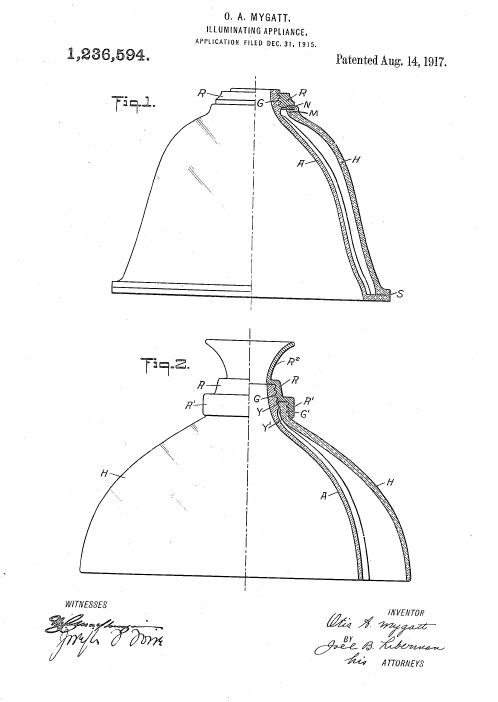
This particular refractor has Rolph sighting marks which makes this lamp either 1931 or newer vintage or an early 20th century luminaire for which the original refractor was broken and later replaced with a post 1931 version of the refractor. Since by the 1930s copper bodied autotransformer models had pretty much given way to porcelain body fixtures equipped with Jones sockets and film cutout disks, it stands to reason that this is likely an earlier vintage luminaire with a replacement refractor.
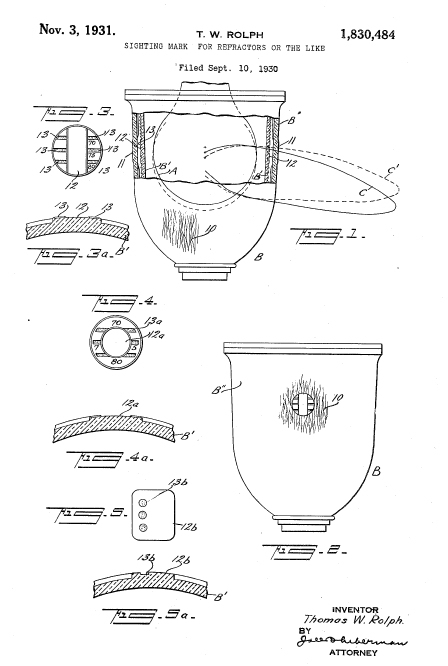
|
| Components of the Form 6 Luminaire |
The lamp disassembled.
|
The autotransformer fit above the socket.
|
In the collection with traffic signals from around the same vintage.
|
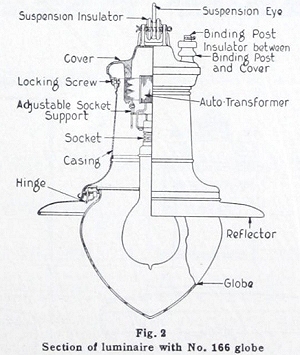
|
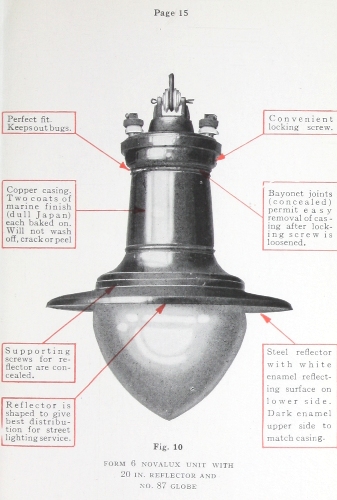
|
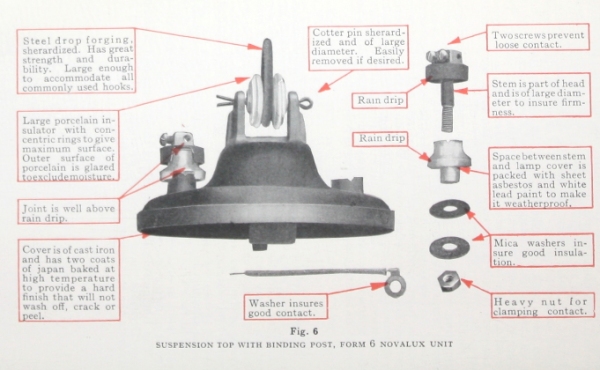
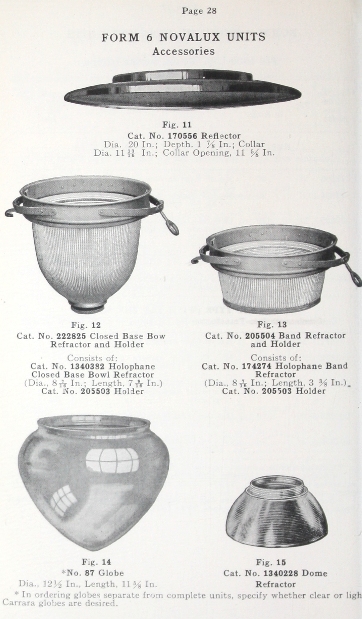
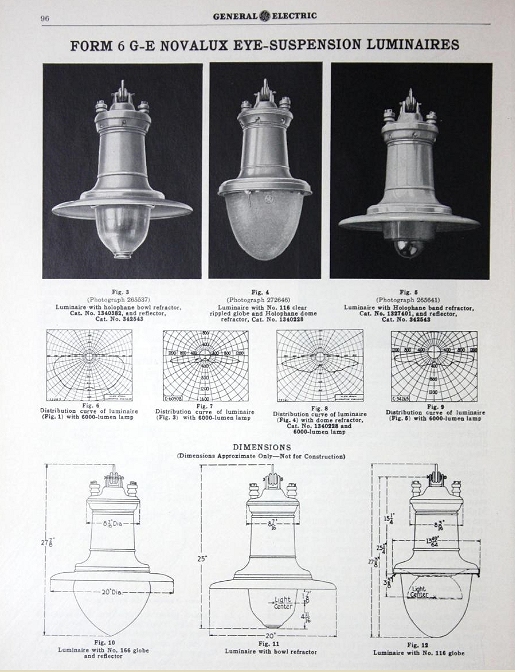
Continue to
GE Form 25A Street Light
